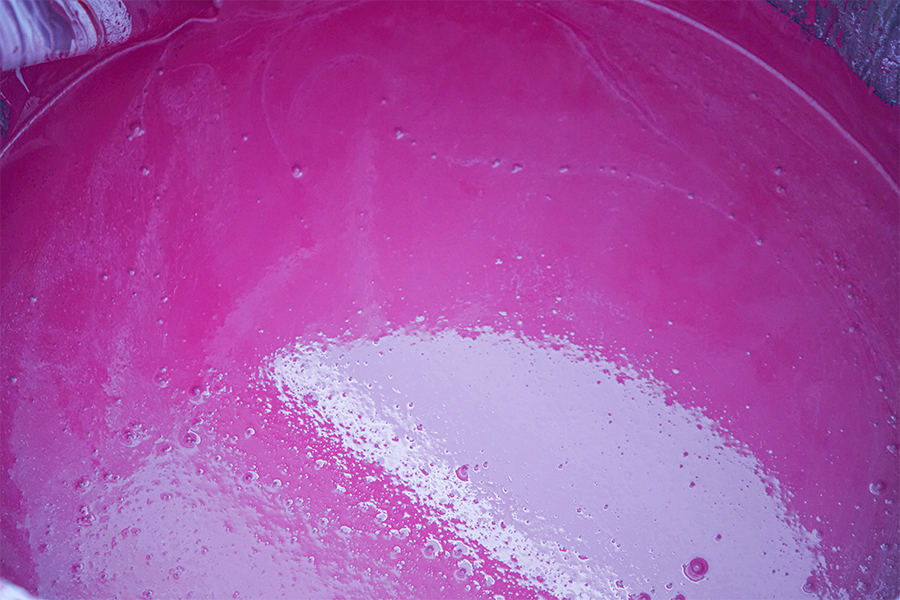As a committed plastic paint manufacturer, Chenchong New Materials understands the real-world challenges metal substrates face in severe environments. From coastal salt spray to high UV exposure and harsh temperature cycling, these conditions demand weather-resistant yet ductile coil coatings.
As a coating manufacturer, we continuously optimize resin architecture and test performance under rigorous bend, weathering, and environmental stress conditions.
1. What harsh climates demand: balance, strength, and flexibility
Seasonal freeze-thaw, intense sun, chemical exposure, and high humidity all make standard polyester coatings prone to cracking or fade.
Rigid coatings may resist scratching yet struggle with sharp bends or roll forming.
Flexible polyester, in contrast, withstands metal forming and thermal expansion & contraction cycles—all while retaining adhesion and gloss.
To learn more about these real-use stressors, industry studies show that standard polyester coatings often fail under 0T bend conditions on aluminum alloys. Our flexible versions, tested to no-crack standards, pass both 0T bend and 0T-tape-off criteria, demonstrating mechanical toughness matched with service durability.

2. Why flexible polyester coatings matter for manufacturers
2.1 Weather resistance without compromise
Flexible polyesters built with specialized diols deliver gloss retention and UV resistance that rival super-durable options. This enables up to 90 % gloss retention after 2 years in Florida exposure tests, while maintaining soft-film compliance for 0T bending.
2.2 Mechanical formability & abrasion avoidance
Coated panels continue to flex during pressing and shipping without pinholing or early corrosion.
2.3 Flexibility keeps the warranty low-risk
Our formulations meet or exceed typical 15‑20 year warranties for HDPE and SDPE polyester products—offering durable weather performance without requiring higher-cost PVDF.
3. How we develop high‑performance flexible polyesters
3.1 Resin architecture: design from the molecule up
Beginning with neopentyl glycol and modified diacids, our team adjusts co-monomers to lower glass transition temperature while optimizing crosslink density. Incorporating BEPD-type diols reduces molecular mobility and yields top-tier bend compliance without sacrificing hardness or adhesion.
3.2 Pilot R&D & accelerated weathering
Every batch is examined via Q‑Fog salt spray, xenon arc, and real-time solar exposure tests. Panels are bent repeatedly, then retested for adhesion and glaze loss to benchmark flexibility preservation.
3.3 Full compliance via third-party tests
Our coatings pass:
T‑bend test at 0T (180 ° on sheet thickness),
Tape-off adhesion with zero pick-off,
Accelerated QUV gloss retention (≥ 90 % at 2⁄4 years),
Outdoor exposure in marine and high-humidity zones.
Results consistently surpass standard polyester grades while avoiding the complexity of fluoropolymer systems.
4. Real-world breakthroughs: where flexible polyester shines
Consider these target environments:
Coastal construction materials facing salt, UV, and bending where PVDF is traditionally specified.
Cold-storage building analogs, where thermal cycling is daily.
Formed metal trims or panels bent during fabrication and installation.
Our flexible polyester systems offer:
Low-VOC, non-fluorinated coatings meeting SDPE/HDPE durability specs.
Bend-line corrosion protection—even on tight folds—without cracking.
Compatibility with coil-fed production & rollforming operations.
5. How our approach compares to other coil coating systems
| Coating Type | Flexibility (0T T‑bend) | Weather Resistance | Cost | Best Use Case |
|---|---|---|---|---|
| Standard Polyester (PE/MDPE) | 1–3T | ≤ 8 years | Low | Mild environments, flat profiles |
| Flexible Polyester (SDPE/HDPE) | 0T | 15–20 years | Moderate | Coastal, cold zones, formable panels |
| Silicone-Modified Polyester (SMP) | 0T or 1T | ~15 years | Moderate–High | Spill resistance, somewhat flexible |
| PVDF Fluoropolymers | 0T | ≥ 20 years, excellent UV | Higher | Severe climate, color-critical facades |
While PVDF still excels in aesthetic color stability, well‑engineered flexible polyester coatings offer nearly comparable outdoor gloss retention and weather durability at a lower lifecycle cost and improved cyclic flexibility.
6. Implementation checklist for specifiers or manufacturers
To evaluate flexible polyester for your project, follow this phased process:
Contract samples for T-bend and accelerated weather aging (UV, salt-spray).
Assess coating thickness—typ. 0.6–1.0 mil (25–35 µm) ideal for HDPE systems.
Run cold-temperature bend trials (e.g., chamber testing at -20 °C).
Commission outdoor parallel exposure for 12–36 months in a high-UV test site.
Review product supply chain resilience and chemical composition certifications (e.g., REACH, RoHS).
To learn more about our flexible polyester industry solutions—or receive custom sample data—reach out to our technical team today. Let’s co-develop the right coil coating system for even your harshest operating environments.


 English
English русский
русский Español
Español Português
Português عربى
عربى
